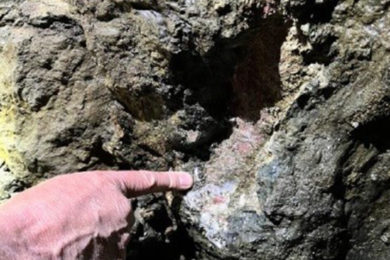The first meeting, organised by the German Engineering Federation (VDMA), between representatives of universities, academies and companies was held in Aachen recently, with the emphasis on securing and fostering the position of the country’s mining equipment manufacturers in the global market. The meeting presented the latest developments, research projects and future requirements for the industry, under the motto ‘Future mining – what will the next generation mine look like?’
Evaluating the success of the event, Klaus Stöckmann, Deputy Managing Director of the VDMA Mining Equipment Association, said “In the development of new mining equipment one can hardly expect quantum leaps. Progress in fact takes place in many little steps” – possible details of which were outlined by high-level representatives of universities and academies from Aachen, Clausthal, Freiberg and Hanover.
Professor Dr Karl Nienhaus from the hosting Institute of Mining and Metallurgical Machine Engineering of RWTH Aachen appealed to manufacturers to overcome the ‘inhibitions’ that impede collaborations with universities, assuring them that know-how will be protected by co-operation agreements. Dr Paul Rheinländer, Director of the VDMA Mining Equipment Association said “I hope today’s event will strengthen the industry’s collaboration with universities and colleges.”
The VDMA said it is essential to draw the manufacturers’ attention to the dormant potential that lies in the universities and colleges. This event, the first in a row of conventions to follow, is meant to build on the German mining industry’s manufacturing position. Innovations are the key, with representatives of the four universities having lots to offer.
The main research fields are maintenance, diagnostics, monitoring and material identification. In the process, sensor technology plays a pre-eminent role, enabling real-time assessment of materials and conditions. Professor Nienhaus sees this technology “as the key to all ambitions to construct machinery and for plants to be autonomous”. At present, attempts are being made to establish a special cross-institute field of research on this subject. A wireless sensor to determine operating loads on conveyors is also being developed and should be ready for production in two to three years time.
Online analyser developed
An online analyser for deposit and quality detection based on laser technology was developed at Clausthal University of Technology’s Mining Institute after about ten years of research and has already passed the practical test. Professor Dr Hossein Tudeshki of the institute says it removes the need for expensive and time-consuming test drilling and subsequent analysis of material. It also helps continuous grade monitoring of the deposit and mine area.
At Clausthal, the effects of various sprinkling systems on dust adhesion, climate and the content of water in underground coal mining are also being analysed. According to graduate engineer John-Glenn Swanson from the university, the crucial criteria here, i.e. size and consistency of water droplets, are determined by lasers.
Scientists from the Mining and Special Underground Mining Institute at the Technical University (TU) Bergakademie Freiberg work in the fields of material identification and optimisation of blasting techniques and digging tools. Graduate engineer Martin Pfütze explained that to enable optimal equipment planning suited to the most diverse geological and technical conditions they simulate machine part wear.
The institute has also been studying the disastrous coal seam fires in China for some time now. It is estimated that around 20 Mt of coal fall victim to the fires every year. In addition, up to another 200 Mt cannot be mined due to the fires.
The Institute of Transport and Automation Technology (ITA) at the University of Hanover focuses on the development of conveying systems, specifically conveyor belts. According to graduate engineer Sascha Falkenberg, it evaluates energy consumption, maintenance costs and operational life span, aimed at developing practical test methods. Presently, the emphasis is on determining the rolling resistance caused by varying stress distribution in conveyor belts moving on idlers. The kinetic resistance is measured with the aid of simulated loads, with Falkenberg saying “the test methods we have developed are very close to reality.”
Graduate engineer Dr Bruno van den Heuvel of RWE Power, representing the largest producer of lignite in the world (91 Mt/y), provided an insight into the future requirements of open-pit mining. He said there is a particular need to reduce maintenance costs: for RWE, these expenses amounted to around one-third of total production costs. Additionally, techniques should be automated and more reliable and energy consumption, specifically in belt conveyors, should be limited. He also said the technical availability of equipment should be improved and that there is strong demand for accurate state information and optimised maintenance concepts.
The next event is scheduled to take place at Clausthal University of Technology in the autumn.








